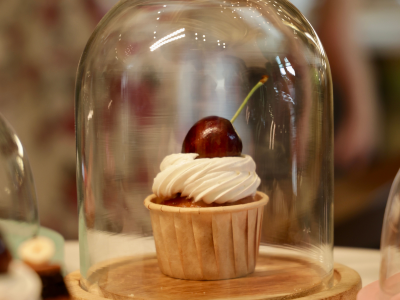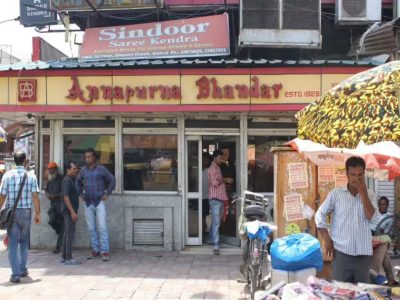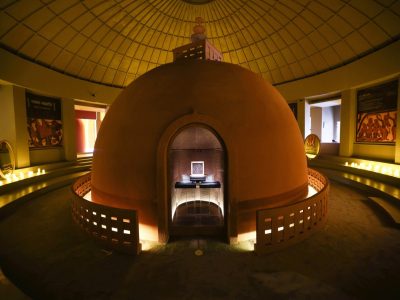A visit to the historic demilitarized zone offers a sobering lesson in history, for here are two halves of a divided Korea longing for reunion, quite unlike the Indian sub-continent
Mention Korea this week, and you will undoubtedly think of US President Donald Trump standing in the demilitarized zone (DMZ) between the two Koreas, making yet another imaginative push for peace. All eyes were on Panmunjom, the little ‘truce village’ in the famous DMZ. As Trump crossed the line from South Korea to step into North Korea for a handshake with Kim Jong Un, photographers went crazy.
I too got a peek at the fortified area once, with 80 journalists from across the world. The Journalists Association of Korea has been organising an annual conference for years to highlight efforts for peace and discuss strategies. The 250×4 sq km stretch which was full of landmines when the Korean War of 1950-53 ended, used to be a horrific barren land, a place of suspicion and fear. Now, the lack of human movement and habitation make it home to many wonderful species of plants and wildlife.
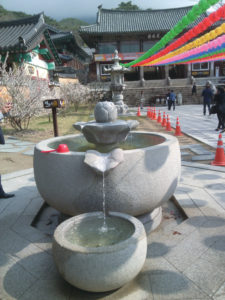
I remember a smart young soldier, eyes covered in the blackest of shades, standing erect, expressionless. Nothing moved between the two blue huts where multiple talks had been held to unite the nations. I got a glimpse of North Korea from the same observation deck on which President Trump stood on June 30.
At the checkpoint where passports are scrutinized, you see an old train engine parked, where it pulled the last train to the other side; also a bridge no one crosses, where messages of peace and flags flutter in the wind. Maybe the old railway track will now come to life.
Ancient like us
The Korean peninsula has been inhabited since the Paleolithic age but most Indians have only heard of the turbulent times of the 20th century – the struggle for freedom from Japanese rule in 1945 and the North-South division after the 1950-53 civil war. My guide, Ok Sun Park (meaning ‘beautiful like jade’), informs that the government had to borrow from the IMF to build the nation after the war. Citizens helped by giving up their gold ornaments, which helped in returning the loan and making the country a bustling global economy.
Seoul is also known as the ‘Miracle on Han River’ due to its post-war transformation. I can see a river shining in the distance. Driving towards it are boats tied on car roofs— there is a weekend camping site someplace close. Cherry trees are in bloom. Waterfront, tents and sports — that’s what a weekend here with a family is like. As we move closer to the city, skyscrapers and bridges come into view.
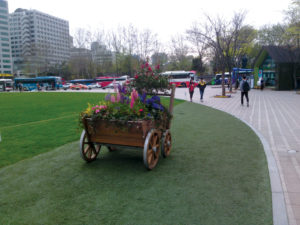
Seoul is an art lover’s delight and an architect’s muse. Though densely populated, the roads are wide and the buildings high. Hygiene, discipline and cleanliness are the norm. Flowers and sculptures adorn the sidewalks. Koreans have a lot of national pride and there are hardly any incidents of tourists being cheated or harassed. Business, discipline and aesthetics blend in well. I call them ‘the timekeepers’ for even a few seconds delay is frowned upon.
Dumping my bags, I hunt for lunch on the streets—here, language is a bit of an issue, but sign language works. I see a lot of sea food—octopus, crabs, whelks, sea fish, king prawns, lobsters, eels. I am not a heavy meat eater but willing to experiment. Koreans love beef and pork. Sitting in a small café, I point to the picture of a red curry: two bites later I discover it’s an octopus in spicy gravy.
If you are a vegetarian, pancakes and pizzas are available, but my advice is to carry dry food with you. I enjoyed an array of fruits and fresh juices during my week-long stay. Coffee is the preferred beverage but red and white ginseng tea is also easily available. Then there are huge scoops of ice cream. Soju is a popular local wine and beer is popular too. It took me about two days to get comfortable with chopsticks made of steel, eating clumsily with chunks falling back into the plate and on the table — till then, a spoon is handy. Every meal has a spicy pickled cabbage salad called kimchi.
It’s drizzling the next day as I head to the Changdeokgung Palace — a Unesco World Heritage site that was the seat of government till 1868. Korea’s last Emperor Sunjong also lived here till his death in 1926. It has a secret garden called Huwon where the royal family relaxed and women gossiped. Spread over 78 acres, this national treasure has over 26,000 specimens of different species of trees. A large part of the original palace was burned during the Japanese invasion but restored later.
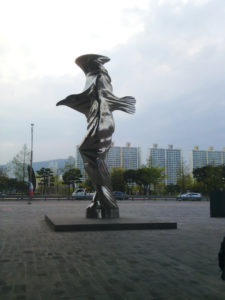
I stand at the edge of the famous 300-year-old jade stream or Ongnyucheon. This U-shaped water channel was carved in 1636 for floating wine cups. A small waterfall and an inscribed poem on the boulder above made it the perfect lover’s spot.
Tea ceremony and peace
Just a few hours and the mountain in the distance have me ‘awwing’. The sky is cloudy and the road lined with cherry blossoms. It’s not a fanatically religious country but some follow Buddhism and Christianity. I am going to Donghwa Temple of the Jogye Order in northern Daegu. Located on the south side of the pristine Mt Palgongsan, it means ‘temple of paulownia blossoms’.
I take a sip of the fresh, sweet water coming from a natural spring. Past some trees, over a small bridge, and up some steps, monk Hye Min takes me to the Buddhist seat. A huge statue of Buddha stands before me—it is the Buddha of Unification.
The temple was built by monk Geuk-Dal in the 15th year of the Silla King SoJi’s reign (493). It was called Yugasa (Yuga-Temple) then. After the reconstruction under King Heung Deok in 832, it became Donghwasa.
Now, time for the traditional tea ceremony, which is a serious business. Seated on the floor in a designated hall, I learn how to greet, make and serve tea. The purpose is to inculcate concentration and encourage calming thoughts and habits. It costs around $25 per person and a coaster is given as a souvenir.
Graffiti and sea
Bidding adieu to peace, I head to the bustling port city of Busan via a four-hour drive through the green countryside. It played host to the 2002 Asian Games, 2002 FIFA World Cup and was a place of refuge during the Korean war. The film industry also operates from this town. The highlight is the bronze sculpture of the ladybird outside Busan’s International Cinema Centre—a seagull from one side and lady from the other.
My next stop is Gamcheon Culture Village. Once a refugee slum, now the Korean Machu Pichu. Many call it Santorini of Korea. With small, hillside homes overlooking the ocean, the villagers (with the government’s help) gave it a facelift in 2009. Art is all around, at every corner—murals, sculptures, graffiti, colourful souvenir shops and their residents.
Despite the matchbox appearance, there is actually a yin and yang order here. In 1958, around 4,000 Taegeukdo believers made it home. This religion lived on the principle of balancing good and evil, as seen in the yin and yang. The houses are built in tiers so that not a single house blocks the view of the house behind it, sticking to the Taegeukdo teaching of allowing everyone to prosper. The main temple of Taegeukdo is also here.
With a lot to explore, it’s best to buy a map at the Haneul Maru Tourist Information Center and Observatory and walk around to your heart’s content. All too soon, it’s time to leave the colours behind. I take the bullet train to Seoul, carrying some blissful times in my tab.
Reaching Seoul
– Air India, Asiana have flights from Delhi, Mumbai and Chennai.
– Wi-fi is available across all public spaces
– Currency: Rs 1= 17.0268 KRW (South Korean Won, subject to change)
– Shopping: There are street markets and night markets where you get cheaper goods. But sellers don’t let you bargain.


